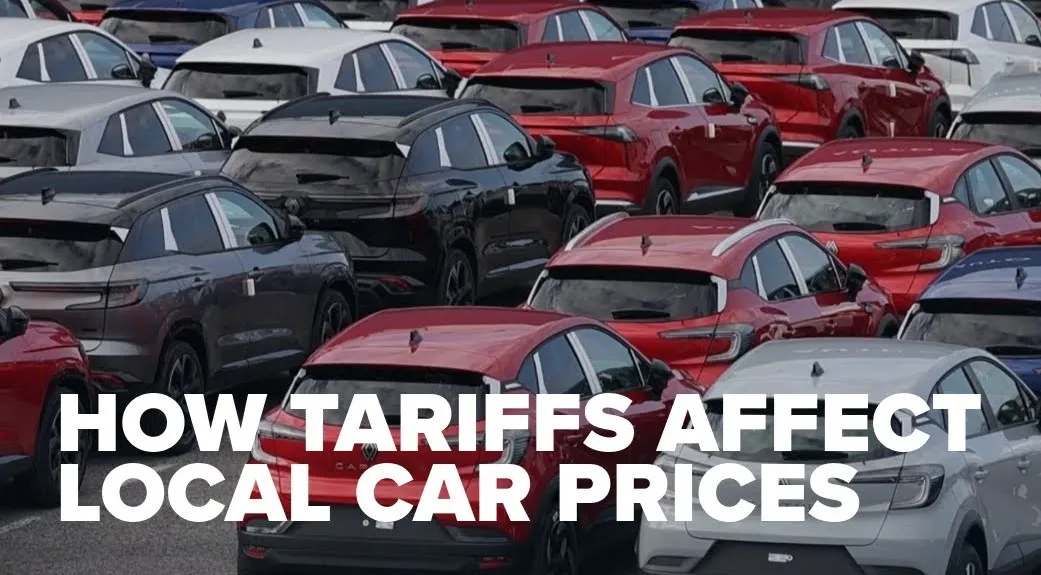The global automotive landscape is shifting, and the UAE may not be immune to the fallout from new tariffs imposed by the U.S. As the Trump administration rolls out its 25% tariffs on all cars shipped to the U.S., including tariffs on vital car parts like engines and transmissions, experts are anticipating a ripple effect that could impact car prices in the UAE. While some industry leaders are predicting price hikes, others are suggesting that the GCC region might benefit from lower car prices and better availability. Let’s take a deeper look into how these new tariffs could affect the UAE's car market in 2025.

In December 2023, President Trump announced a 25% tariff on all cars imported to the U.S. Additionally, tariffs were extended to essential components, such as engines and transmissions, which are integral to vehicle manufacturing. This move is expected to be fully enforced by May 3, 2025, and could drive up costs across the global automotive market.
For instance, vehicles such as American-specification cars from brands like Lexus, BMW, and Mercedes, which are produced using U.S. parts, may see price increases ranging from 10-15%. This will likely affect UAE consumers, as many of these vehicles are popular in the region.
While the tariffs may raise costs for some vehicle types, there’s a possibility that the UAE could benefit from the shifting global automotive supply chain. Some experts suggest that disruptions caused by the tariffs might lead manufacturers to redirect excess inventory from the U.S. to markets like the UAE, creating an abundance of vehicles and fostering more competitive pricing.
This could lead to better deals for consumers in the UAE, as manufacturers aim to balance supply and demand in alternative markets. In addition, intense competition between dealers in the UAE could further lower car prices, benefiting buyers in the region.
However, for consumers looking to purchase U.S.-made vehicles or those reliant on U.S.-produced parts, price increases seem inevitable. This includes popular American models and vehicles like muscle cars that often have specialized components sourced from the U.S.
Experts suggest that vehicles manufactured in the U.S. or using American components could see price hikes of anywhere from 10% to 15%, as manufacturers face higher tariffs on parts. These increases could be felt by UAE buyers as well, particularly in the high-performance or luxury vehicle markets.
While the UAE market may not face the same immediate challenges as the U.S., the global automotive supply chain is likely to experience disruptions. The tariffs may lead to delays in the delivery of car parts and new models, especially for vehicles imported from countries directly impacted by the tariffs. This could create supply chain issues in the UAE, leading to delays in car deliveries and potential shortages of specific models.
Despite these challenges, there are also opportunities. For instance, cars produced in countries like China, Japan, and South Korea may gain a competitive edge in the UAE due to their lower production costs and efficiency. These markets may fill the gap left by disrupted U.S. imports, offering consumers more options at potentially lower prices.
The new U.S. tariffs are creating a complex environment for the global automotive market, and the UAE is not immune to these changes. While the short-term outlook may include some price increases, the UAE could also stand to gain from better availability and competitive pricing on certain models. The next few months will be pivotal in shaping the future of car prices in the UAE, and buyers should stay informed to make the best purchasing decisions.
For more insights on the UAE’s car market, explore updates on Khaleej Times and CNN.
| How Artificial Intelligence is Redefining Driving in the GCC |
| Over 250 New EV Charging Stations Coming in 2025 |
| Sell Your Car in the UAE Like a Pro: Complete Guide |